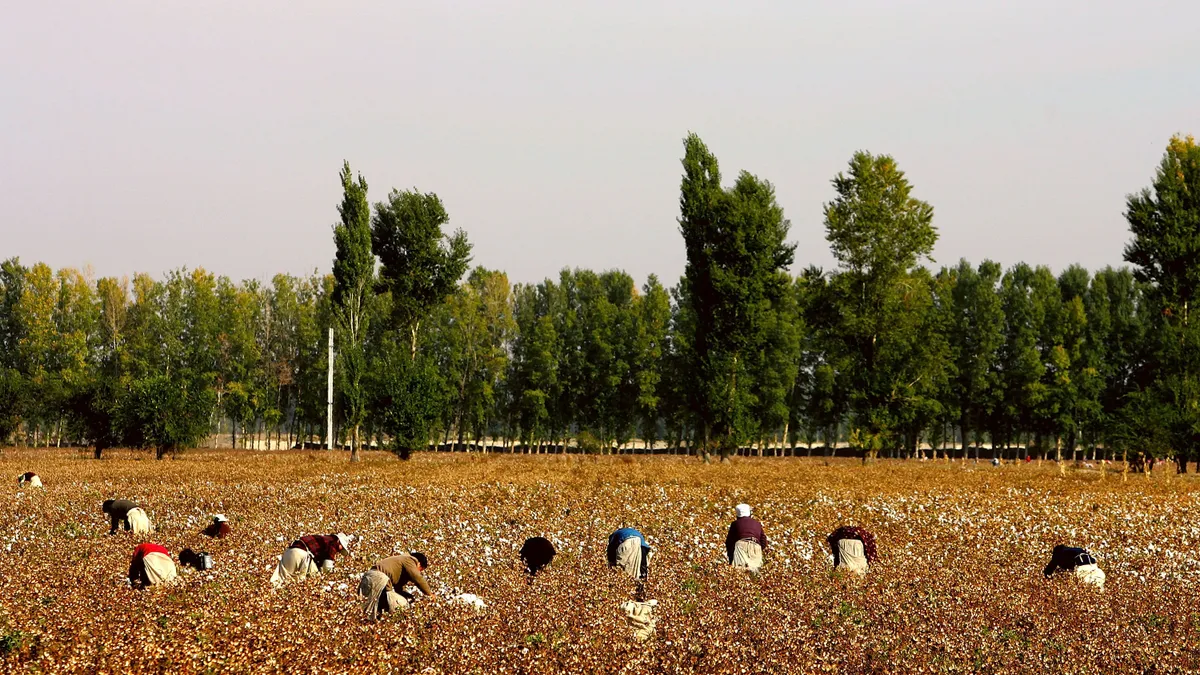Dive Brief:
- Cotton from the Xinjiang region of China was found in 19% of 822 cotton-containing products sampled from February 2023 to March 2024, according to a report provided to Fashion Dive by Applied DNA Sciences.
- The public company, which provides technology-based supply chain certification, also found that of the Xinjiang-positive samples claimed to be of single-origin, 57% were labeled as containing U.S.-only cotton. Products from the Xinjiang region are banned from sale in the U.S. due to concerns over forced labor, and the report noted that claims of origin affect a product’s eligibility for tariff reductions when imported to the U.S.
- Of the tested Xinjiang-positive samples, 66% were blended with cotton from other regions, while 34% were solely from Xinjiang, per the report. Of the blended samples, 42% contained cotton from Brazil, and 40% contained cotton from the U.S.
Dive Insight:
Applied DNA Sciences' partner Stratum Reservoir tested various products sold both domestically and abroad for isotopes, which are forms of elements that indicate where a plant was grown. Items in the testing group included yarn, fabric, apparel, footwear, and consumer products, such as cotton swabs.
The prevalence of Xinjiang cotton in the new study was higher than what was indicated via isotope testing by U.S. Customs and Border Protection, which, according to Reuters, previously found that 15% of 86 samples of imported clothes and shoes collected between Dec. 22, 2022 and May 23, 2023 contained Xinjiang cotton. However, these samples only included clothes and shoes.
“These results are highly concerning given the prevalence of Xinjiang cotton in a wide range of apparel, footwear, home textiles, and other consumer products,” MeiLin Wan, vice president of textile sales at Applied DNA Sciences, said in an email to Fashion Dive. “Under the UFLPA, the amount of Xinjiang cotton entering the U.S. should be zero. Anything above zero percent should be eliminated.”
Although the report did not say whether some products contained more Xinjiang cotton than others, Wan said, “[w]hat we found was that it was prevalent in virtually every category.”
The results indicate the importance of “knowing your supply chain at all stages,” Wan said. “If you only test finished goods or garments, you will never know where the problems are in your supply chain.”
She added that if finished goods are on a ship bound for the U.S., and products aren’t tested in advance, this could also pose issues if CBP requests more information.
The report notes that the incidence of blending of Xinjiang cotton with cotton from other origins “may make it more difficult to clear investigations and provide evidence of traceability, origin and testing of physical goods.”
The high incidence of U.S. cotton blended with Xinjiang cotton could be due to the fact that the U.S. exports large amounts of cotton to China, the report said. China was the biggest buyer of U.S. cotton in 2023, according to the U.S. Department of Agriculture.
“Whether the brand knows or does not know it is incumbent on them under UFLPA to do their due-diligence and work with their supply chain partners to ensure they are compliant” Wan said.
Correction: A previous version of this story misstated the public nature of Applied DNA Sciences and did not include the company's testing partner.















